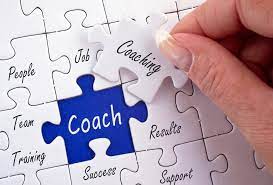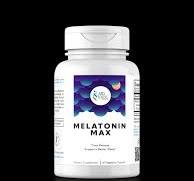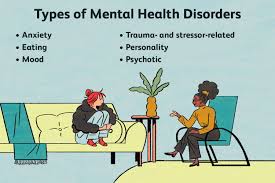Pain is one of the most common complaints that people experience, and it can be caused by a variety of factors such as injury, illness, or chronic conditions. Pain can be debilitating and have a significant impact on daily life, making it difficult to work, exercise or enjoy hobbies. However, there are many ways to manage pain effectively and improve quality of life.
One approach to pain management is medication. Over-the-counter pain relievers such as acetaminophen and ibuprofen can be effective for mild to moderate pain. However, for more severe pain, prescription medications may be necessary. It’s important to work closely with a healthcare provider when taking any type of medication for pain management because some medications can have side effects and may not be appropriate for everyone.
Another approach to managing pain is physical therapy. Physical therapy involves exercises and techniques designed to improve strength, flexibility, and range of motion in the affected area. Physical therapists can also use modalities such as heat or ice therapy, massage or electrical stimulation to help manage pain.
In addition to medication and physical therapy, there are several complementary therapies that can help manage pain. These include acupuncture, massage therapy, chiropractic care and meditation. While these therapies may not work for everyone, they have been shown to be effective in managing pain for some individuals.
It’s important to note that while managing pain is important, it’s also essential to address the underlying cause of the pain. For example, if someone is experiencing back pain due to poor posture or weak muscles in their core area then physical therapy may be an effective way of addressing both the symptoms (pain) as well as the underlying cause (weak muscles).
Finally, lifestyle changes such as exercise and diet can play an important role in managing chronic pain. Exercise has been shown to release endorphins which are natural mood-boosters that also help reduce inflammation in the body – one of the main causes of chronic pain. A healthy diet can also help reduce inflammation and improve overall health.
In conclusion, pain management is an important aspect of overall health and well-being. There are many different approaches to managing pain including medication, physical therapy, complementary therapies and lifestyle changes. It’s important to work closely with a healthcare provider to determine the best approach for managing pain based on individual needs and circumstances. With the right treatment plan, it’s possible to effectively manage pain and improve quality of life.
5 Effective Tips for Managing Pain: From Exercise to Therapy
- Exercise regularly to reduce pain and improve your overall health.
- Practice relaxation techniques like deep breathing, yoga, or meditation to help manage pain.
- Talk to your doctor about medications that can help control pain.
- Use heat or cold therapy, such as a hot water bottle or ice pack, to reduce inflammation and relieve discomfort.
- Participate in physical therapy and other forms of rehabilitation to help strengthen the affected area and increase mobility
Exercise regularly to reduce pain and improve your overall health.
Exercise is a powerful tool when it comes to pain management. Regular exercise can help reduce pain and improve overall health. Exercise releases endorphins, which are natural mood-boosters that also help reduce inflammation in the body – one of the main causes of chronic pain.
When it comes to exercise, it’s important to find an activity that you enjoy and that is appropriate for your fitness level. Walking, swimming or cycling are all great options for low-impact exercises that can be done regularly. Strength training can also be helpful in managing pain by improving muscle strength and reducing strain on joints.
It’s important to start slowly and gradually increase intensity over time. Trying to do too much too soon can lead to injury or exacerbate existing pain. A physical therapist or personal trainer can provide guidance on developing an exercise plan that is safe and effective for your individual needs.
In addition to reducing pain, regular exercise has many other health benefits such as improving cardiovascular health, reducing stress and anxiety, and improving sleep quality. By incorporating regular exercise into your routine, you can not only manage pain but also improve your overall health and well-being.
In conclusion, regular exercise is an effective way to manage pain and improve overall health. It’s important to find an activity that you enjoy and start slowly with guidance from a healthcare provider or fitness professional. With consistency and patience, regular exercise can become a part of your pain management plan for better health outcomes.
Practice relaxation techniques like deep breathing, yoga, or meditation to help manage pain.
When it comes to managing pain, there are many different approaches that can be taken. One effective tip is to practice relaxation techniques such as deep breathing, yoga, or meditation. These techniques have been shown to help reduce stress and anxiety, which can exacerbate pain symptoms.
Deep breathing is a simple yet effective technique that can be done anywhere at any time. By taking deep breaths and focusing on the sensation of the air moving in and out of the body, we can help calm our nervous system and reduce feelings of tension and pain.
Yoga is another excellent way to manage pain. The practice of yoga involves a series of postures (asanas) that are designed to improve flexibility, strength, and balance. Many yoga poses are also beneficial for reducing pain symptoms by stretching tight muscles and improving circulation.
Meditation is a technique that involves focusing on the present moment while letting go of distracting thoughts and emotions. By practicing meditation regularly, we can train our minds to become more focused and calm which can help reduce feelings of stress and anxiety that may contribute to pain symptoms.
By incorporating relaxation techniques like deep breathing, yoga, or meditation into our daily routine, we can effectively manage pain while also improving our overall health and well-being. It’s important to remember that everyone’s experience with pain is unique, so it’s essential to work closely with a healthcare provider when developing a treatment plan for managing pain.
Talk to your doctor about medications that can help control pain.
If you are experiencing pain, it’s important to talk to your doctor about medications that can help control it. Pain relievers such as acetaminophen and ibuprofen are available over-the-counter and can be effective for mild to moderate pain. However, for more severe pain, prescription medications may be necessary.
It’s important to work closely with your doctor when taking any type of medication for pain management because some medications can have side effects and may not be appropriate for everyone. Your doctor can help determine the best medication and dosage for your specific condition and needs.
Additionally, it’s important to follow the prescribed dosage and instructions carefully when taking any medication for pain management. Taking too much or too little medication can have negative effects on your health or may not effectively manage your pain.
In conclusion, talking to your doctor about medications that can help control pain is an important step in managing pain effectively. Your doctor can help determine the best approach based on your individual needs and circumstances. By working together with your healthcare provider, you can find relief from pain and improve your quality of life.
Use heat or cold therapy, such as a hot water bottle or ice pack, to reduce inflammation and relieve discomfort.
Heat and cold therapy are simple yet effective ways to manage pain and reduce inflammation. They work by altering blood flow to the affected area, which can help reduce pain and swelling.
Heat therapy, such as using a hot water bottle or taking a warm bath, can be particularly effective for muscle pain or stiffness. The heat helps increase blood flow to the affected area, which can help relax muscles and reduce pain. Heat therapy can also be used for arthritis pain, as it helps relieve stiffness in joints.
On the other hand, cold therapy is often used for acute injuries or swelling. Applying an ice pack or a bag of frozen vegetables wrapped in a towel to the affected area can help reduce inflammation and numb the area, which can help relieve pain. Cold therapy is particularly effective for reducing swelling after an injury such as a sprain or strain.
It’s important to note that heat and cold therapy should be used carefully and not applied directly to the skin as this can cause burns or frostbite. It’s also important not to use heat therapy on areas with open wounds or infections.
In conclusion, heat and cold therapy are simple yet effective ways to manage pain and reduce inflammation. They are inexpensive, easy to use at home, and have minimal side effects when used correctly. If you’re experiencing pain or inflammation, consider incorporating heat or cold therapy into your pain management routine after consulting with your healthcare provider.
Participate in physical therapy and other forms of rehabilitation to help strengthen the affected area and increase mobility
Participating in physical therapy and other forms of rehabilitation can be an effective way to manage pain and improve overall mobility. Physical therapy involves exercises and techniques designed to improve strength, flexibility, and range of motion in the affected area. By strengthening the muscles around the affected area, it can help reduce pain and prevent further injury.
Rehabilitation may also include other forms of therapy such as massage or electrical stimulation. These modalities can help reduce pain by increasing blood flow to the affected area, which can help promote healing.
Physical therapy and rehabilitation are often recommended for individuals who have experienced an injury or have a chronic condition that affects their mobility. However, these therapies can also be beneficial for individuals experiencing pain due to poor posture or weak muscles.
It’s important to work closely with a healthcare provider when participating in physical therapy or rehabilitation. A healthcare provider can design a treatment plan that is tailored to an individual’s specific needs and circumstances. They can also monitor progress and adjust the treatment plan as necessary.
In conclusion, participating in physical therapy and other forms of rehabilitation can be an effective way to manage pain and improve overall mobility. By working with a healthcare provider, individuals can receive personalized care that is tailored to their specific needs, helping them achieve their goals for pain management and improved quality of life.




